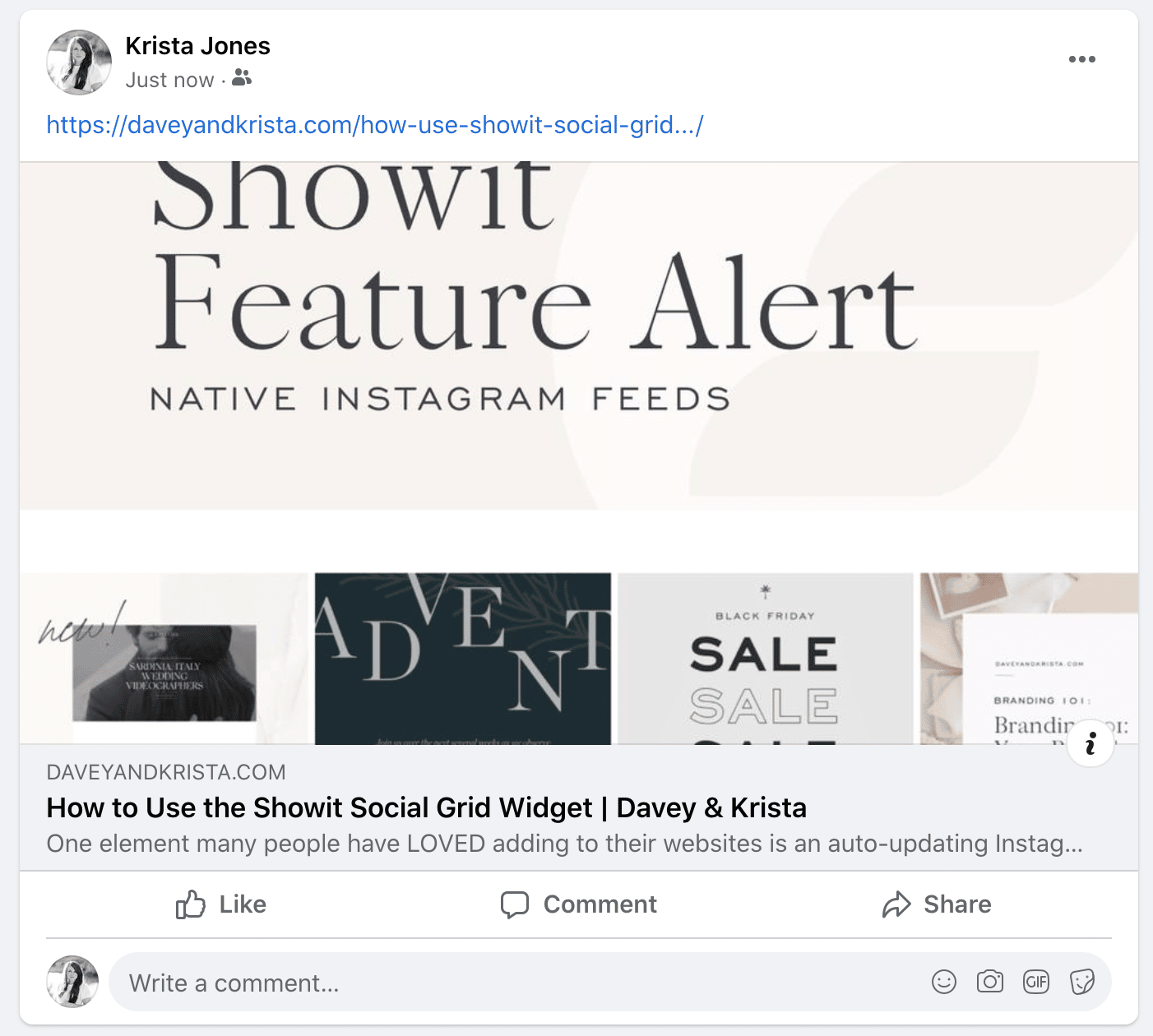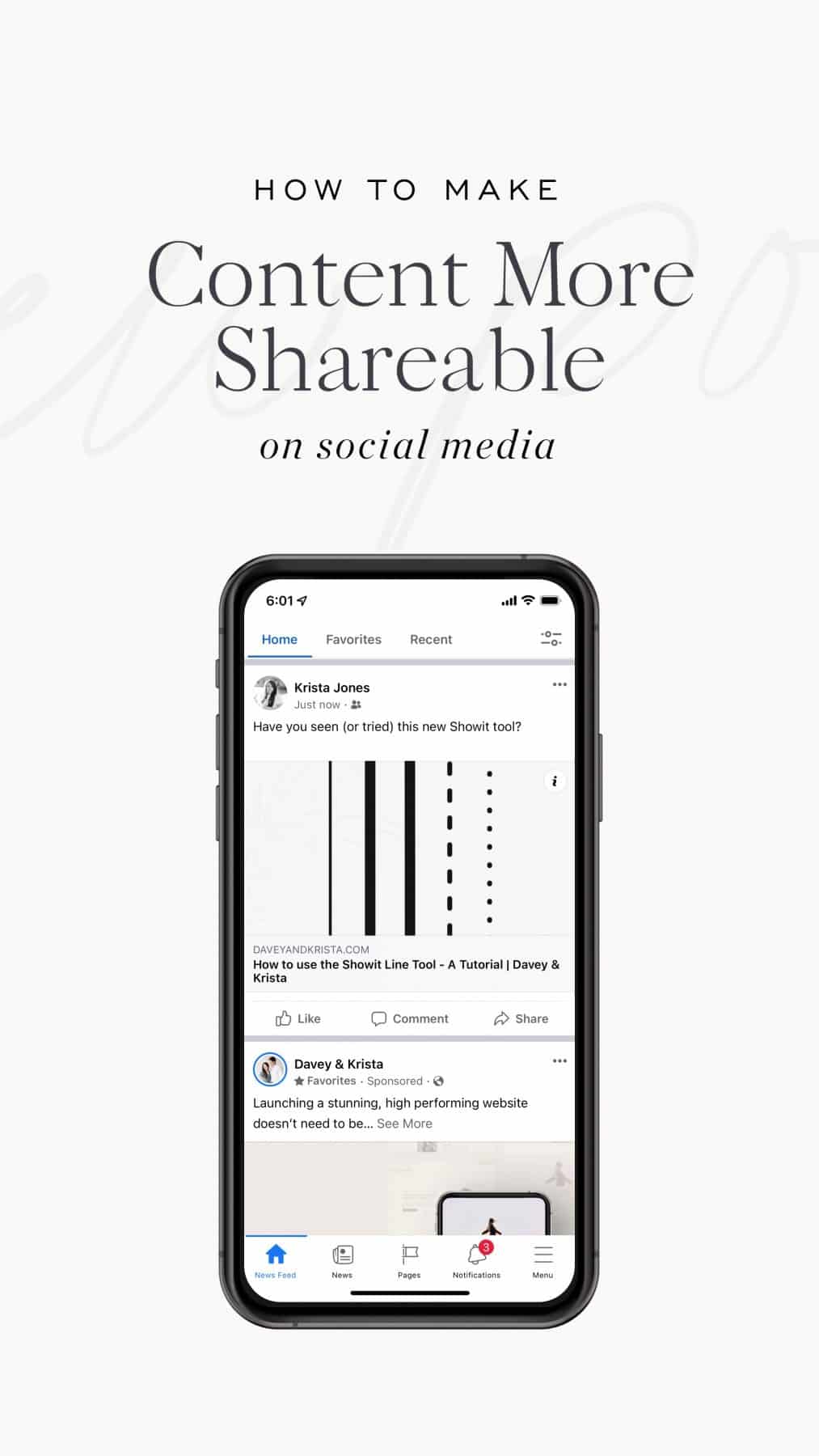Most of us know that creating content can go a long way towards increasing your discoverability on search engines as well as creating an engaged audience.
But if you’re spending hours creating content, how can you make it more likely that your content is shared online?
1. Start with a Catchy and Benefit Oriented Headline
Creating engaging headlines goes a long way towards attracting attention and encouraging people to click into your post. While I don’t think you need to take the same headline stance as Buzzfeed or a tabloid magazine, but you should put some thought into your headlines.
A few tips:
- Don’t get too clever. Make sure that the title accurately reflects the content in the article.
- Try to use benefits and action-oriented verbs.
- “How-to” articles tend to generate more traffic and more shares.
- Use Numbers in Titles. It gives people an idea of what to expect.
Want an example?
Instead of: Everything You Need to Know About Wedding Day Timelines
Try: 7 Tips for a Stress-Free Wedding Day
2. Make Sure Your Post Includes Text
Even if you’re blogging a wedding that is filled with images, make sure you include some text at the top of the post. Not only is this better for search engines, it also helps readers understand the context of the day. Who are the people in these images? Why do they matter?
I’ve seen images from blog posts go viral—but when that happens, it’s often because of the story behind the image. Tell that story in the blog post.
3. Create blog posts for Podcasts and YouTube Videos
We’re big fans of creating a variety of content. We post regularly on our podcast and YouTube channels. But when we do so, we always try to give that content an online home on our website. Both iTunes and YouTube make sharing to Pinterest challenging. If you were to try to create a Pin from YouTube, it picks up the video thumbnail – which isn’t a great size for Pinterest. I don’t even think it would be possible to create a Pin from an iTunes page.
Giving content a home on your website also makes it easier to share about extra resources, related posts, show notes and more.
4. Make Sure Every Post Has at Least One Image
Whenever possible, try to make sure every blog post has at least one image – even if the bulk of the post is an embedded video.
Without an image, it’s hard for visitors to share about the post on Pinterest. In an ideal world, the post would include a graphic at the bottom that is made specifically for Pinterest.
A few tips for creating Pin-worthy images:
- Follow the 2:3 image size ratio. Pinterest recommends making images 1000px by 1500px (think verticals!)
- Include the title of the blog post
- Add keyword rich alt text to the image because the Pinterest “pin it” buttons pick it up.
- Create a variety of pins for each post. This allows you more opportunities to share your content on Pinterest.
Learn how to create Pinterest graphics in Canva »

And after chatting with Pinterest expert Vanessa Kynes, we also try to create idea pin content and video pin content. Often, we can use the videos we create on both Instagram (as a Reel) and Pinterest.
Even if a post doesn’t have a video, we will sometimes pull stock video files from a free site like Pexels or stitch a few “slides” of content together to create a video. See an example here and learn how to create your own videos from static content here.
If you take the extra step to create a few extra share graphics for your content, it’s going to allow you more opportunities to share the same piece of content. It gives it a longer life.
5. Add Social Share Buttons to Blog
Make it easy for visitors to share about your post by adding share buttons. If you’re a Showit or Elementor user, you can actually build these into your template (most of our templates already include them on the blog post page.) Or you can add a third party plugin—such as Sumo.

Other plugins – like the Pinterest Pin It button are great for encouraging visitors to save images (and thus add links to your blog post to the internet). The Pin It button is a WordPress Plugin that works with Showit and enables those Pinterest buttons appear over blog images. Just a note: If you do this on a 100% WordPress site, the buttons can be set to appear over any image. If you’re on Showit, it’s only going to work on blog pages.
Learn how to add social share buttons to a Showit website »
Learn how to add social share buttons to an Elementor (WordPress) website »
7. Setting Up Open Graph Details
Plugins like RankMath, Yoast and SEO Press all include areas to customize the way a post is shared on social media. If you’ve ever shared a link on Facebook and noticed that the image, text or description don’t match the content, it’s likely because the Open Graph markup wasn’t set.
These plugins allow you to set the image (which is great if you have a sidebar on your site or a post with multiple images), customize the title (if needed) and customize the blurb.
People can technically change these items when they share your content, but if you’re already taking the steps to optimize a post, setting the social features can ensure that if your post link is shared, it’s more likely to get clicks.

8. Share Your Own Content on Social Media to Make Re-Shares Possible
If you want to make your social media more shareable, one of the most important things you can do about it is to share it yourself.
Whenever we post new content, we share it in a variety of areas:
- Facebook – We typically post this content the day it goes live, and then use an app like Co-Schedule to share the post several times again in the future.
- Pinterest – We always share content as both static pins and idea pins. And as I mentioned previously, we’ll share this content several times using different images/videos.
- Instagram: We share about content on both Instagram stories as well as in the feed. While stories tends to get a lot of attention these days, we’ve found that unless someone is tagged in that story, it’s not easy to re-share the content. Traditional feed posts, reels and videos are much easier to re-share. We’ve also noticed that if we’re sharing content, adding the title of the post to the image results in a lot more “saves” and re-shares.
While I know that this list is pretty extensive, if you take the steps to make sure that your content is easy to share, it’s going to give your content a much longer life.
Comment below if you have any questions or your own tips!

VIEW THE COMMENTS
Add A Comment